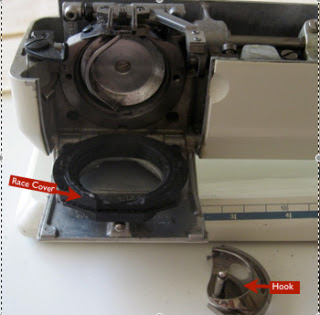Look no further, you've found what you've dreamt about, the perfect reference book just for you and the best part is... You will make it yourself! That's right, I'm going to take you through the process of making your very own customized Swatch Book a tool you'll use for a lifetime and maybe some day hand down to a future sewing enthusiast.
We'll begin with basic seams, pressing and seam finishing. You're more advanced? No worries, I'll be moving forward pretty quickly, so you'll find fun new techniques before you can say 'cartridge pleats'. In the meantime, follow along so you'll have a complete Swatch Book.
PLAIN SEAM
Place two fabric pieces Right Sides Together (right sides kissing), Sew a 5/8" Seam.
Repeat 4 more times, so that you now have 4 Plain Seam Swatches.
There are two ways to treat a seam with pressing; Open and to One Side. Using two of your 4 Plain Seam Swatches, press one Open and the other to One Side. When pressing a seam you must press the fabric taut against the Seam Line (stitching).
SEAM FINISH
The seams need to be treated to prevent raveling of the raw edges. There are many ways to finish seams, we'll explore them all eventually, right now let's focus on the most basic - using a zig zag stitch. I've chosen the Multi-step Zig Zag on my machine, yours may look a bit different, but will do the same job equally as well.
Place the Zig Zag closer to the seam if you'd like to or need to trim the seams. Trim the seam close to the Zig Zag. Place it at the edge when there's no need to trim.
LABEL
When finished with your swatches label them with a fine tipped permanent marker right on the fabric or attach a written or printed label by sewing, stapling, taping or whatever means suits you. Attach the swatch to Card Stock and keep in a three ring binder.
Now, sit back and Admire your Handiwork.
Next up: The French Seam.
















